Blog

Housing Headlines Mask Unsettling Trends
In its April Housing DatarnWrap-Up Wells Fargo’s economists summarize the nation’s housing picture: “While most of the housing-related headline numbers continue to improve, the underlying detailsrngive us some pause.” </p
One headline, the surprisingrnspurt in housing starts in March. A 1.04rnmillion unit annualized rate marked the highest pace since June 2008. Rising above one-million units was arnsignificant milestone, however the increase was totally in the multi-familyrnsector, and single-family starts fell 4.8 percent.</p
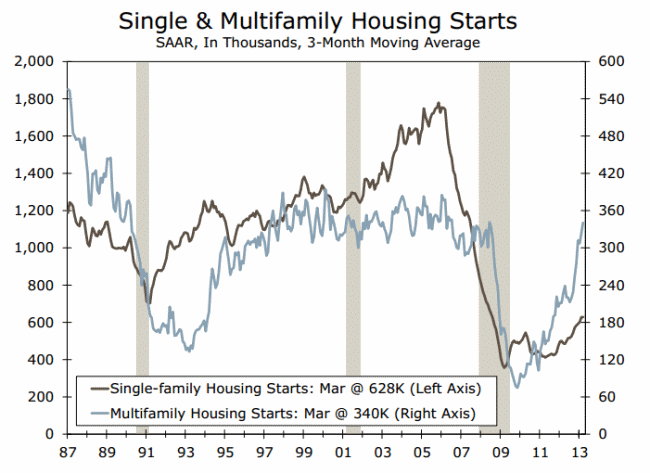 </p
</p
Another headline is risingrnprices and tightening inventories. Thernmost recent figures from both S&P Case-Shiller and the National Associationrnof Realtors reflect around 10 percent annual appreciation and as a consequencernthe percentage of homeowners with negative equity has declined. But much of the impetus behind the risingrnprices and shrinking inventories, especially in troubled markets like Atlantarnand Miami, are sales to investors and cash purchases. Rising prices have outstripped appraisals inrnsome markets, making it tougher for buyers needing a mortgage to buy a home.</p
Wells Fargo points to other recentrncauses for concern. One is the recentrnslide in the Builders Index, a reflection of homebuilders’ perceptions of thernnew home market. After climbing intornnear positive territory for the first time in six or seven years in early 2013,rnit has slipped five points over the last three months. Mortgage originations for home purchases arernalso flat. </p
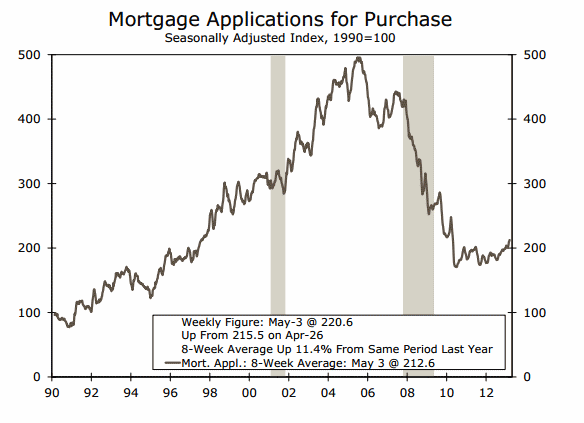 </p
</p
The Bank says anotherrndisconcerting signal comes from the growing divergence between thernhomeownership rate and the recent spike in prices. Rising home prices usuallyrncoincide with rising demand as more households form or people’srnpreferences swing toward homeownership. rnThe Banks says neither trend appears to be present today. rnHousehold formation rosern980,000 in 2012, compared to the long term annualrnaverage of 1.28 million between 1965 and 2001. Moreover, the overwhelming majority of new households arernchoosing to rent rather than own their home. The homeownership rate fell 0.4 percentagernpoints during the first quarter to 65.0 percent and is now at levels last seen in the mid-1990s.</p
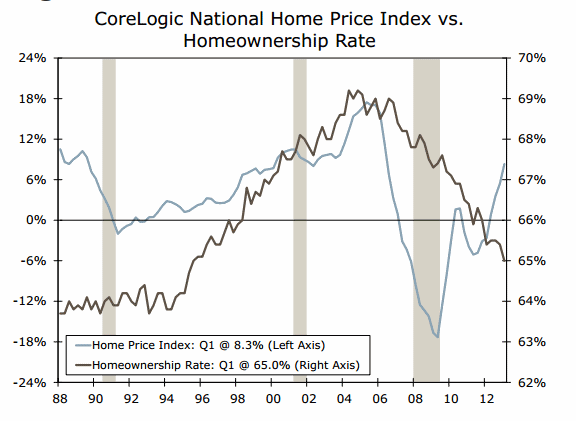 </p
</p
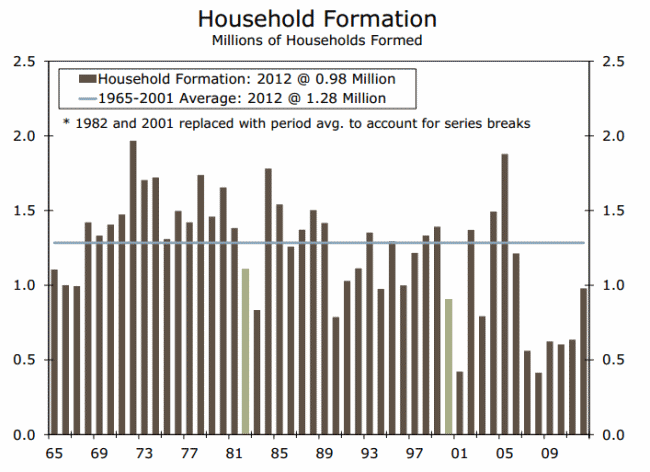 </p
</p
The report points out, “It is hard to imagine a sustainable housing recovery taking place with fewer homeowners.” rnThis point, it says, “appears to be lost in all of the celebration over soaring home prices and bidding wars for the scarcerninventory of homes currentlyrnavailable for sale.” It is important to balance enthusiasm overrnsoaring prices with the knowledge that most of the housing market is stillrnhealing and the sharp increases in prices driven partially by both individualrnand investor purchasing. In contrast to prices, home sales are following arnmore modest trajectory, one in line with mortgage purchase applications. </p
One point which tends to be overlooked,rnthe report says, is that a full-fledged housing recovery will require a normally functioning mortgage market and we are nowhere close to one. The Federal Reserve is buying $40 billion inrnmortgage securities every month, the futures of Freddie Mac and Fannie Mae arernuncertain and there are questions related to employment and job creation whichrnhave potential ramifications for homeownership. </p
Wells Fargo saysrnmany of the trends it is citing are behind decisions by developers andrninvestors to ramp up construction and purchases of rental properties. They are justified in these decisions as thernnumber of renters has increased by 610,000 in the last year and rentalrnvacancies are down. 0.2 percentage points to 8.6 percent, continuing a four-year slide. </p
Construction of new apartments is up dramatically,rnpermits during the first three months of 2013 are running 52.7 percent abovernthe same period in 2012. Deliveries of apartment willrnmore than triple by year-end, which should begin to reverse the recent slide in apartment vacancy rates. Even with an increase in deliveries, however, WellsrnFargo says it expects multifamily construction to account forrna larger proportion of future starts, reflecting more infill development in major areas near where the bulk of jobs are being created.</p
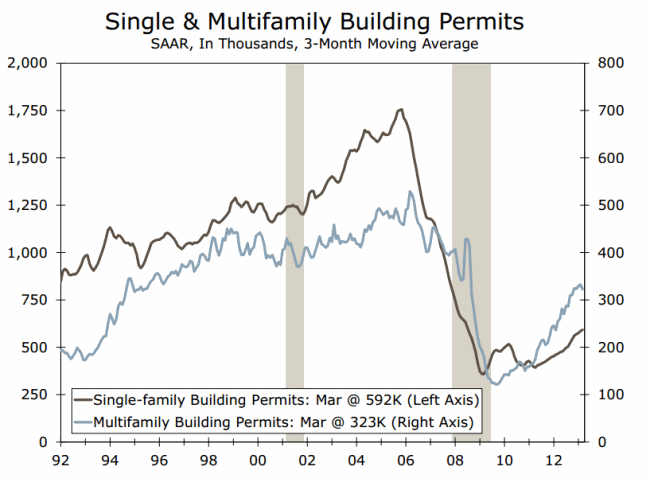
All Content Copyright © 2003 – 2009 Brown House Media, Inc. All Rights Reserved.nReproduction in any form without permission of MortgageNewsDaily.com is prohibited.
Latest Articles
By John Gittelsohn August 24, 2020, 4:00 AM PDT Some of the largest real estate investors are walking away from Read More...
Late-Stage Delinquencies are SurgingAug 21 2020, 11:59AM Like the report from Black Knight earlier today, the second quarter National Delinquency Survey from the Read More...
Published by the Federal Reserve Bank of San FranciscoIt was recently published by the Federal Reserve Bank of San Francisco, which is about as official as you can Read More...

Comments
Leave a Comment